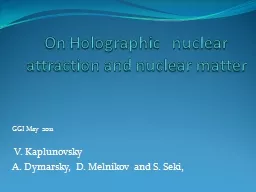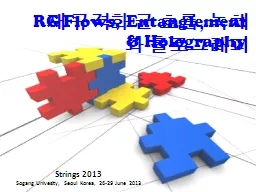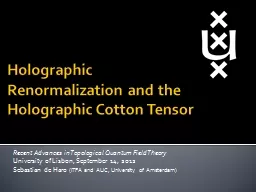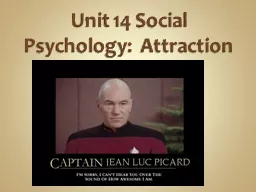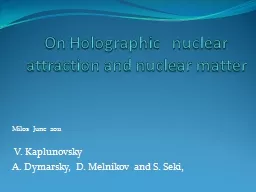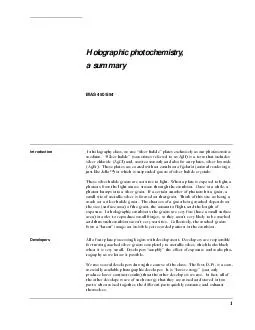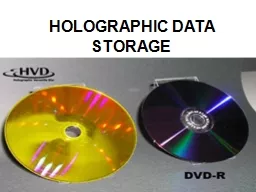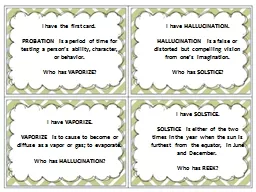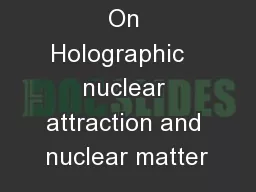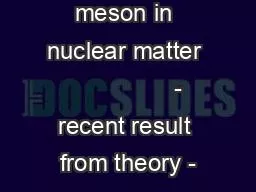PPT-On Holographic nuclear attraction and nuclear matter
Author : pasty-toler | Published Date : 2018-01-08
GGI May 2011 V Kaplunovsky A Dymarsky D Melnikov and S Seki Introduction In recent years holography or gaugegravity duality has provided a new tool to handle
Presentation Embed Code
Download Presentation
Download Presentation The PPT/PDF document "On Holographic nuclear attraction and ..." is the property of its rightful owner. Permission is granted to download and print the materials on this website for personal, non-commercial use only, and to display it on your personal computer provided you do not modify the materials and that you retain all copyright notices contained in the materials. By downloading content from our website, you accept the terms of this agreement.
On Holographic nuclear attraction and nuclear matter: Transcript
Download Rules Of Document
"On Holographic nuclear attraction and nuclear matter"The content belongs to its owner. You may download and print it for personal use, without modification, and keep all copyright notices. By downloading, you agree to these terms.
Related Documents

